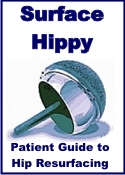|
|
|||||||||
|
Paid Advertisement
|
Minimally invasive total knee arthroplasty compared with traditional total knee arthroplasty. Assessment of the learning curve and the postoperative recuperative period. 2007 King J, Stamper DL, Schaad DC, Leopold SS. METHODS: The first 100 minimally invasive total knee arthroplasties done by a
single high-volume arthroplasty surgeon were compared with his previous fifty
procedures performed through a medial parapatellar approach, with respect to
operative times, implant alignment, and clinical outcomes. Radiographic end
points and operative times for the minimally invasive group were evaluated
against increasing surgical experience, in order to characterize the learning
curve. RESULTS: Overall, the minimally invasive approach took significantly
longer to perform, on the average, than a medial parapatellar approach (86.3 and
78.9 minutes, respectively; p=0.01); this was the result of especially long
operative times in the first twenty-five patients in the minimally invasive
group (mean, 102.5 minutes). After the first twenty-five minimally invasive
operations, no significant difference in the operative times was detected
between the groups. The first twenty-five minimally invasive procedures had
significantly less patellar resection accuracy (p<0.001) and significantly more
patellar tilt than the last twenty-five (p=0.006). Other end points for implant
alignment, including the frequency of radiographic outliers, were not different
between the minimally invasive and traditional groups. The patients who had the
minimally invasive approach demonstrated significantly better clinical outcomes
with respect to the length of hospital stay (p<0.0001), need for inpatient
rehabilitation after discharge (p<0.001), narcotic usage at two and six weeks
postoperatively (p=0.001 and p=0.01, respectively), and the need for assistive
devices to walk at two weeks postoperatively (p=0.025). CONCLUSIONS: A
quadriceps-sparing minimally invasive approach seems to facilitate recovery, but
a substantial learning curve (fifty procedures in the hands of a high-volume
arthroplasty surgeon) may be required. If this experience is typical, the
learning curve may be unacceptably long for a low-volume arthroplasty surgeon. |
|
|||||||
|
Web design by Patricia Walter
Copyright Knees For You Guide to Knee Replacement 12/18/2006 |
|||||||||







